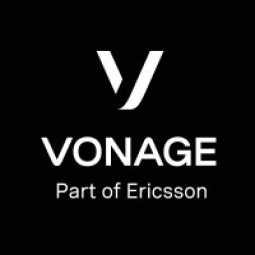Download PDF
In-House Customer Service Transformation for Sure Petcare via Vonage Contact Center
Technology Category
- Application Infrastructure & Middleware - Data Exchange & Integration
- Networks & Connectivity - Gateways
Applicable Functions
- Product Research & Development
- Sales & Marketing
Use Cases
- Inventory Management
- Search & Rescue
Services
- Cloud Planning, Design & Implementation Services
- System Integration
The Challenge
Sure Petcare, a company dedicated to enhancing the lives of pets and their owners through technology, was facing a challenge with its customer service. Previously, all of Sure Petcare's customer service calls and emails were handled by an outsourced service. However, the company wanted to bring customer service in-house to improve the experience for pet owners who sought detailed advice about installing their products and any problems they might have with their pets using them. The goal was to set up an in-house operation using cloud technology to get the best features at the lowest costs. The company also wanted a solution that would make the most of Sure Petcare’s Salesforce implementation.
About The Customer
Sure Petcare is a company founded on the belief that applied technology can enhance the lives of pets and their owners. The company offers products like pet doors and smart food bowls that use micro-chipped access control. The company was launched in 2008 after three years of intensive research and development. Sure Petcare has won many pet industry awards and has sold hundreds of thousands of pet doors across the world. It has expanded into several markets around the world, including Europe, North America, and Australia. The products are sold online or through vets and pet stores.
The Solution
Sure Petcare decided to transition to Vonage Contact Center for Salesforce. This solution was based on cloud technology, which made it simple for Sure Petcare to manage their customer service without the need for expensive IT resources. The configuration of the call center was straightforward, including number set-up, routing calls, and ongoing management. The system also provided multilingual call routing, serving four different languages, which saved customers time and ensured effective communication. The integration with Salesforce drove efficiency, saving valuable time and effort for advisors. The system also provided a 'click-to-dial' feature for outbound calls, and a call recording system for skills and capability development for the advisors.
Operational Impact
Quantitative Benefit
Related Case Studies.

Case Study
Hospital Inventory Management
The hospital supply chain team is responsible for ensuring that the right medical supplies are readily available to clinicians when and where needed, and to do so in the most efficient manner possible. However, many of the systems and processes in use at the cancer center for supply chain management were not best suited to support these goals. Barcoding technology, a commonly used method for inventory management of medical supplies, is labor intensive, time consuming, does not provide real-time visibility into inventory levels and can be prone to error. Consequently, the lack of accurate and real-time visibility into inventory levels across multiple supply rooms in multiple hospital facilities creates additional inefficiency in the system causing over-ordering, hoarding, and wasted supplies. Other sources of waste and cost were also identified as candidates for improvement. Existing systems and processes did not provide adequate security for high-cost inventory within the hospital, which was another driver of cost. A lack of visibility into expiration dates for supplies resulted in supplies being wasted due to past expiry dates. Storage of supplies was also a key consideration given the location of the cancer center’s facilities in a dense urban setting, where space is always at a premium. In order to address the challenges outlined above, the hospital sought a solution that would provide real-time inventory information with high levels of accuracy, reduce the level of manual effort required and enable data driven decision making to ensure that the right supplies were readily available to clinicians in the right location at the right time.

Case Study
Hardware Retailer Uses Data Warehouse to Track Inventory
Ace tracked which products retailers ordered, when they were ordered and shipped. However, the company could not track or forecast actual sales. Data used for reporting was up to a one-week old, owing to performance and data cleansing issues. Requirement to integrate wholesale and inventory data with POS data to help drive key business decisions, improve category management, lower inventory costs and optimize pricing. Reliance on custom coding to integrate POS data was excessively resource intensive and led to major performance constraints.

Case Study
Remake Enterprise-to-production System
The client was running a legacy material flow tracking system and wanted to replace the system with a more effective one as the system was increasingly expensive to maintain and support and also was not extendable. The client's IT landscape was filled with modern applications and it was difficult to interface the material flow tracking system with modern applications.

Case Study
Expertech - Capital Tool Inventory
Costly tools used to splice fiber optic cables are an important part of Expertech’s operational and capitalized expenses, but the company did not have an automated system in place to track their tools and optimize their usage. The existing data in its tracking system was inaccurate and required manual updating, making it essential for the company to implement an efficient process to track and follow up on its capital tool inventory.







